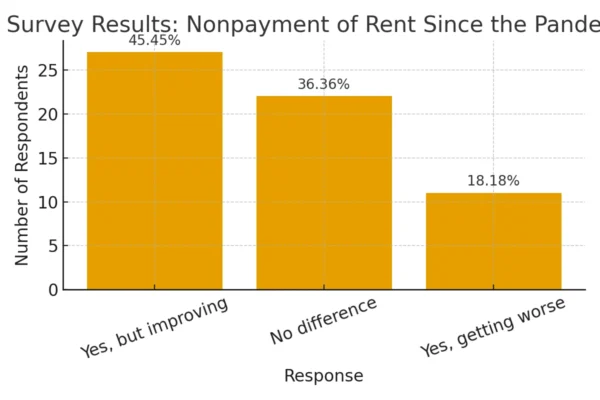What Is the Gross Rent Multiplier?
 Are you looking to choose your next (or first!) investment property? As a property owner, selecting a rental property to invest in can be incredibly daunting — especially when there are many options on the market. One tool that investors can use to determine their next rental property is the gross rent multiplier.
Are you looking to choose your next (or first!) investment property? As a property owner, selecting a rental property to invest in can be incredibly daunting — especially when there are many options on the market. One tool that investors can use to determine their next rental property is the gross rent multiplier.
The gross rent multiplier is often used to help new and seasoned investors make a final decision on a real estate property. Excited to add this calculation to your investment tool belt? Read on and discover the ins and outs of the gross rent multiplier.
What is the gross rent multiplier (GRM)?
The gross rent multiplier calculates the potential profitability of rental properties within the same market value based on the gross annual rent income.
The gross rent multiplier formula is the ratio of a rental property’s asking price to its monthly or annual gross income that determines the potential number of years required to pay off the property in gross rent payments.
As a best practice, many investors select an investment property with a gross rent multiplier of less than 100 when calculating with monthly rental income. If you are using the annual gross rental income, you should look for a gross rent multiplier less than 10. This signifies that the property will take a fewer number of years to pay for itself, which can be beneficial to you as the investor.
What is the difference between a gross rent multiplier and a capitalization rate (cap rate)?
A gross rent multiplier shouldn’t be confused with a property’s cap rate.
Gross rent multipliers provide an estimate of the rental property value based on potential generated gross rental income. In contrast, a cap rate shows the real estate property’s current value and should be based on the net operating income (NOI) returned to the investor. The NOI doesn’t include the mortgage payment for the property or debt service.
An easier way to judge the difference between the two is in how they’re viewed beneficially. While a lower gross rent multiplier has increased potential profitability, the reverse is true for the cap rate. Investors would prefer to see a higher cap rate for potential profitability.
Why does the gross rent multiplier matter?
As an estimate to value the potential gross income generated by a rental property, the gross rent multiplier is an easy calculation that only needs two pieces of information:
- The rental property price
- Estimated gross monthly rent
This makes the gross rent multiplier an extremely accessible formula for investors to determine profit estimates for potential investment properties.
For example, if a real estate investor considers two similar properties marketed at the same prices, the property with the lower gross rent multiplier may be the better option due to an increased gross rental income stream.
Additionally, as a rental property owner, you could use the gross rent multiplier to monitor fluctuations in property value based on gross rent. If your gross rent multiplier is higher than any other comparable property, it may be an indicator to raise monthly rent for tenants to keep up with the market — and remain profitable.
Since this calculation reflects the rental property market, it’s unlikely that tenants will leave due to increased rent payments. However, if they do, the property owner or property manager shouldn’t have trouble finding a prospective tenant as the adjusted rent based on the gross rent multiplier reflects the current market.
How do you calculate your gross rent multiplier?
Below is the gross rent multiplier formula and how to use it:
Property Asking Price (or Property Value) / Gross Rental Income = Gross Rent Multiplier
As discussed before, the gross rent multiplier will depend on whether the real estate investor uses the monthly or annual gross rental income for this calculation. If the monthly rental income is used, a gross rent multiplier under 100 is generally preferred. For annual rental income, a gross rent multiplier under 10 would most likely be preferred.
For our example, we’ll be using the annual gross rental income in our calculations:
Imagine there are two similar investment rental properties: Property A, Property B and Property C.
Property A has an asking price of $250,000 and will produce a gross annual rental income of $40,000. To calculate Property A’s gross rent multiplier:
250,000 / 40,000 = 6.25 GRM
Property B has an asking price of $200,000 and will produce a gross annual rental income of $25,000. To calculate Property B’s gross rent multiplier:
200,000 / 25,000 = 8.00 GRM
Property C has an asking price of $300,000 and will also produce a gross annual rental income of $25,000. To calculate Property C’s gross rent multiplier:
300,000 / 35,000 = 8.57 GRM
All gross rent multiplier values are less than 10 — this may be a good sign for an investor. However, Property A has the lowest gross rent multiplier, which indicates it’s probably the better real estate investment out of the three options.
If you are on the fence about which rental property to purchase, this may be an added reason to choose Property A. After all, a lower gross rent multiplier signifies that Property A will probably pay for itself at a faster rate than Property B or C will.
However, it’s important to remember that this calculation doesn’t consider other factors, such as if the property needs additional renovations to be used as a rental property. What if Property A requires a major renovation project to make the property rent-ready for tenants? This could be a dealbreaker if Property B or C are in better condition and ready to rent soon after purchase.
These extra factors must be taken into consideration to build a full picture of each similar property before making a financial commitment or signing any documents. Other factors to incorporate in the decision process may include:
- Property tax
- Location
- Repairs and maintenance
- Amenities
- Operating expense costs
When to use your gross rent multiplier
A gross rent multiplier is a great tool for any property owner, property manager or commercial real estate investor. It’s easy and straightforward, so you can do it quickly and add it to your decision-making process when renting out properties.
There are three main scenarios where people use the gross rent multiplier. When looking for a rental property to invest in or when considering how much rent to charge and when to increase the amount.
Finding and committing to a rental property can be a daunting task. It’s a major financial commitment whether you’re a new property owner or a seasoned investor with multiple under your belt. The gross rent multiplier can give a big picture estimate of how each rental property on your list compares to the other when estimating potential profitability. This can help you decide or just fill in the missing information you need for each property.
It can also be extremely beneficial to determine when you should increase monthly rent prices for tenants based on the current real estate market. If your gross rent multiplier is higher than comparable rental property units in your area, that’s a good sign to raise rent without angering tenants. After all, if they hypothetically looked elsewhere, the rental price of a similar unit should be in the same range.
Real estate resources and support from AAOA
Beyond the gross rent multiplier, there is a broad range of real estate tips and tricks that can help any investor on their journey toward success.
AAOA was created to support landlords and property owners with industry-leading real estate resources, including one-of-a-kind tenant screening services, tenant background checks and other rental documents to help you manage your business better
When you become a member, you have direct access to all of these resources and more!
Discover how to streamline your business: Join AAOA today.













 Accessibility
Accessibility